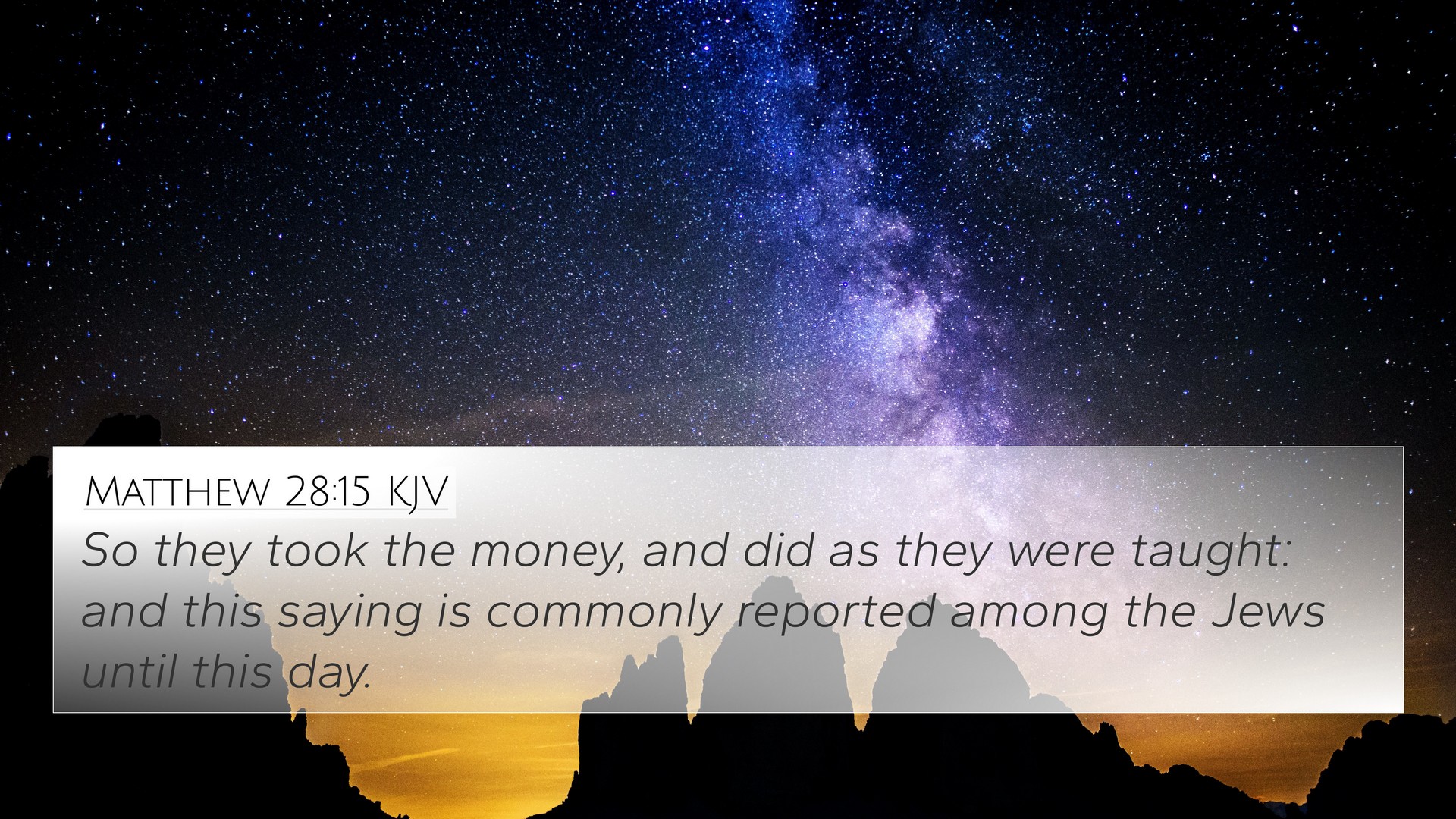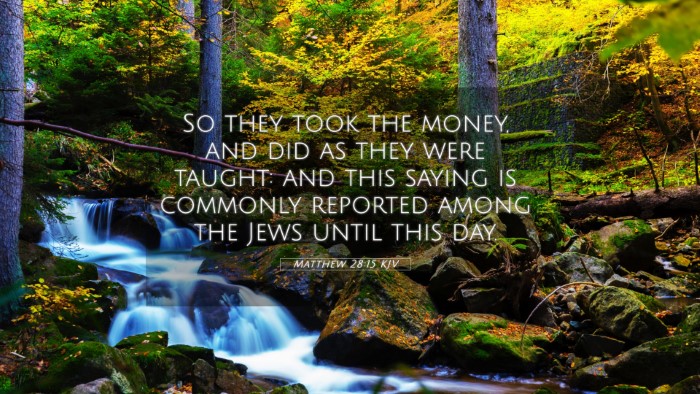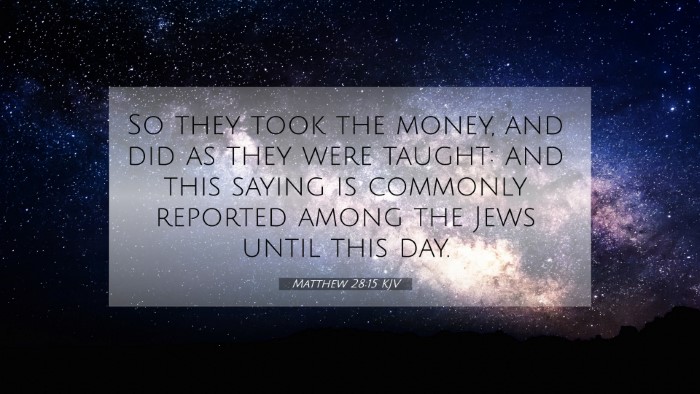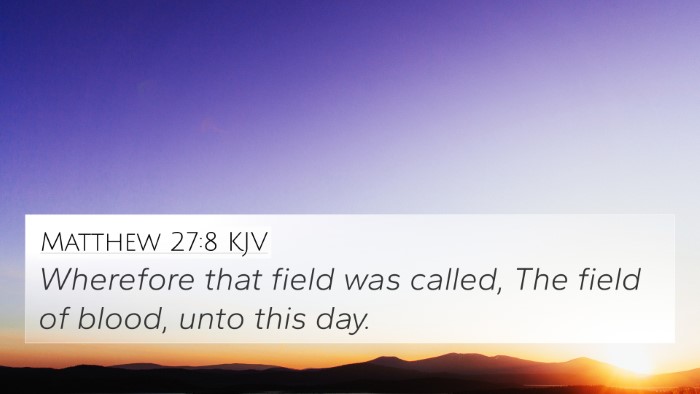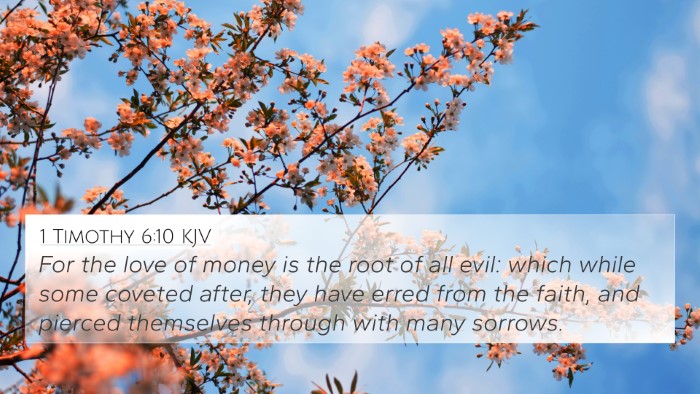Understanding Matthew 28:15
Matthew 28:15 reads: "So they took the money and did as they were directed; and this story has been spread among the Jews to this day." This verse concludes the narrative of the guards at the tomb following the resurrection of Jesus, highlighting their actions in response to the bribery they received.
Summary of Insights
This verse serves as a poignant commentary on the deception surrounding Jesus' resurrection. The guards, upon witnessing the miraculous event, were bribed to spread misinformation, which showcases human nature's propensity to prioritize worldly gain over truth. The public domain commentaries provide rich insights into the implications and meanings of this verse.
Commentary Insights
- Matthew Henry's Commentary:
Henry emphasizes the remarkable shift in events: the guards, who were meant to protect the tomb, instead became instruments in propagating falsehood. Their actions reflect the failure to acknowledge divine power, as they prioritized their earthly interests over the truth of the resurrection.
- Adam Clarke's Commentary:
Clarke notes the audacity of the chief priests and elders in concocting this scheme. He highlights how the acceptance of a bribe to spread a lie demonstrates a broader rejection of Jesus as the Messiah and the lengths to which the authorities would go to quell the truth.
- Albert Barnes' Commentary:
Barnes discusses the enduring nature of this deceit, which continues among the Jewish community. He remarks on the historical impact of this story and its implications for understanding the conflicts between early Christians and Jewish leaders.
Thematic Connections
Matthew 28:15 resonates with several themes throughout the Scriptures, including:
- Deception and Truth: This verse exemplifies the struggle between falsehood and the truth of the resurrection.
- Faith and Authority: The guards’ compliance with the chief priests illustrates the tension between earthly authority and divine revelation.
- Human Nature: The prioritization of personal gain over truth is a recurrent theme in the Bible.
Cross-References
Here are some relevant cross-references that connect with Matthew 28:15:
- Matthew 27:62-66: Details the Pharisees’ concerns about the disciples potentially stealing Jesus' body.
- 1 Peter 5:8: Encourages vigilance against deception, paralleling the guards' experience.
- Luke 16:13: Discusses the impossibility of serving two masters, relating to earthly bribery versus divine truth.
- John 8:44: Describes the devil as the father of lies, emphasizing the nature of corrupt actions.
- Acts 5:29: Highlights the necessity of obeying God rather than human authorities, contrasting the guards' choice.
- Matthew 28:11: The narrative begins with the guards reporting to the chief priests, setting the stage for the bribery.
- Romans 1:25: Discusses exchanging the truth of God for a lie, relevant in the context of Matthew 28:15.
Application of Cross-Referencing
Engaging with these cross-references can enrich one’s understanding of how different scriptures relate to each other:
- Bible Cross-Reference Guide: Utilize tools like a Bible concordance for locating these connections.
- Comparative Bible Verse Analysis: Reflect on parallel themes, comparing the resurrection narratives across the Gospels.
- Bible Chain References: Link verses from both the Old and New Testaments that explore themes of truth and deception.
Conclusion
Matthew 28:15 serves as a critical reminder of the ongoing conflict between truth and falsehood within the biblical narrative. By exploring public domain commentaries and engaging in cross-referencing, believers and seekers can gain a deeper understanding of this verse and its implications for faith and practice. The tools for Bible cross-referencing and the exploration of connections between verses allow for a comprehensive study of the Scriptures, aiding in sermon preparation and personal devotion.
